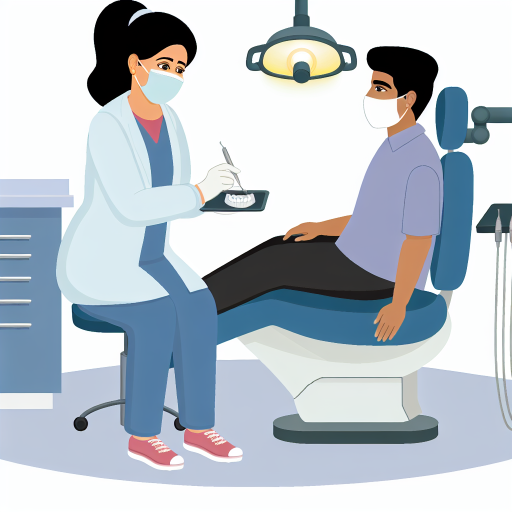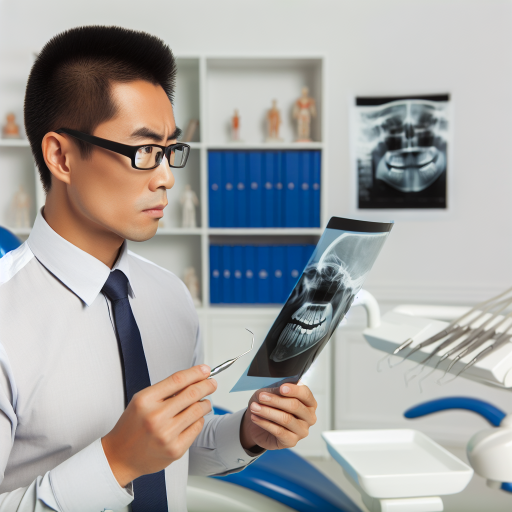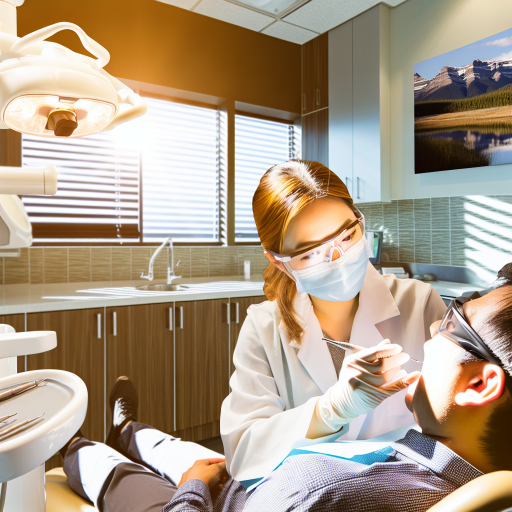Overview of Dental Technology in Canada: Current Landscape
The dental technology landscape in Canada continually evolves.
Canadian clinics increasingly adopt advanced technologies.
This adoption enhances patient care and treatment efficiency.
Current Trends in Dental Technology
Digital dentistry remains a significant trend.
More clinics utilize intraoral scanners and CAD/CAM systems.
These tools allow for precise restorations and reduced treatment times.
Embracing Telehealth Solutions
Telehealth has gained popularity in dental practices.
This approach offers consultations without in-person visits.
It improves accessibility, especially in remote areas.
Integration of Artificial Intelligence
Artificial intelligence is making strides in dentistry.
AI algorithms help in diagnostics and treatment planning.
These tools analyze patient data for more accurate assessments.
Focus on Patient-Centric Technology
Patient comfort is becoming a priority in dental care.
Clinics implement technologies that enhance overall experience.
For instance, virtual reality can reduce anxiety during procedures.
Data Security and Privacy Concerns
As clinics adopt new technologies, data security is critical.
They focus on protecting patient information and confidentiality.
Implementing robust cybersecurity measures helps mitigate risks.
Future Prospects of Dental Technology
The future of dental technology looks promising in Canada.
Innovations will likely focus on laser dentistry and 3D printing.
These advancements could lead to less invasive treatment options.
Emerging Technologies in Dentistry
3D Printing in Dental Care
3D printing is transforming dental clinics across Canada.
This technology allows for rapid prototyping of dental aids.
For instance, dentists can create custom molds on-site.
This significantly reduces the waiting time for patients.
Unlock Your Career Potential
Visualize a clear path to success with our tailored Career Consulting service. Personalized insights in just 1-3 days.
Get StartedMoreover, 3D printing minimizes material waste.
Clinics can manufacture dental prosthetics with precision.
This ensures better fitting and comfort for patients.
Additionally, 3D printing can enhance treatment planning.
Dentists can visualize complex cases in three dimensions.
Hence, treatment becomes more predictable and efficient.
Advantages of CAD/CAM Systems
CAD/CAM systems complement the benefits of 3D printing.
These systems facilitate computer-aided design and manufacturing.
Dentists can design restorations digitally before fabrication.
This not only saves time but also enhances accuracy.
Furthermore, CAD/CAM allows for on-demand production.
Patients can receive crowns or bridges in a single visit.
This convenience improves overall patient satisfaction.
Moreover, the digital workflow streamlines the entire process.
As a result, dental teams can focus more on patient care.
Integrating Emerging Technologies
Integrating 3D printing and CAD/CAM systems represents innovation.
Many Canadian clinics are early adopters of these technologies.
For example, Maplewood Dental in Toronto utilizes both.
They report increased efficiency and improved patient outcomes.
By adopting these technologies, clinics enhance their competitive edge.
Ultimately, this integration leads to better care delivery.
As the industry evolves, staying updated is crucial for success.
Thus, ongoing training and investment in technology is essential.
Tele-dentistry: Expanding Access to Care through Technology
Overview of Tele-dentistry
Tele-dentistry utilizes technology to provide dental care remotely.
It allows patients to connect with dental professionals via video calls.
This approach increases convenience for patients with mobility limitations.
Moreover, it reduces the time and cost associated with in-person visits.
Benefits of Tele-dentistry
Tele-dentistry offers numerous advantages for both patients and providers.
- It improves access to care, particularly in rural areas.
- Patients receive timely consultations without traveling long distances.
- It facilitates follow-up appointments efficiently and conveniently.
- This method increases patient engagement and satisfaction.
Challenges and Considerations
While tele-dentistry has advantages, it also faces challenges.
One challenge is ensuring adequate technology access for all patients.
Additionally, some patients may prefer traditional in-person visits.
Privacy and security concerns regarding patient information must also be addressed.
Future Trends in Tele-dentistry
Technology continues to evolve, making tele-dentistry more accessible.
Artificial intelligence and machine learning can enhance diagnosis accuracy.
Furthermore, mobile applications may streamline the tele-dentistry process.
As acceptance grows, tele-dentistry is likely to become a staple in dental care.
Gain More Insights: What Patients Expect from a Trusted Dentist in Canada
The Role of Artificial Intelligence in Diagnostics and Treatment Planning
Introduction to AI in Dentistry
Artificial Intelligence is transforming the field of dentistry in Canada.
Clinics are adopting advanced technologies to enhance patient care.
AI improves accuracy in diagnostics and simplifies treatment planning.
Enhancing Diagnostics with AI
AI algorithms analyze dental images efficiently.
These systems detect cavities, gum disease, and other issues.
As a result, dentists can identify problems earlier.
Moreover, AI reduces the chances of human error.
Streamlining Treatment Planning
AI assists in creating customized treatment plans for patients.
This technology considers various factors, including patient history.
By analyzing data, AI recommends the best treatment options.
Consequently, this leads to more effective and personalized care.
Improving Patient Outcomes
By utilizing AI, dentists can enhance patient outcomes significantly.
Faster and more accurate diagnoses lead to timely treatments.
Patients appreciate the efficiency and effectiveness of AI-enhanced care.
Challenges and Considerations
Despite its benefits, AI integration in dental clinics faces challenges.
Data privacy and security issues concern many practitioners.
Additionally, staff training is essential for effective implementation.
Future Trends in AI in Dentistry
AI’s role in dentistry will continue to expand in the coming years.
Innovations will likely emerge, improving patient care further.
Moreover, collaboration between tech companies and dental professionals is essential.
This partnership will help shape the future of dental diagnostics and treatment planning.
Learn More: How Dentists Contribute to Public Health in Canada
Digital Radiography: Enhancing Imaging Techniques in Clinics
Introduction to Digital Radiography
Digital radiography represents a significant advancement in dental imaging.
This technology utilizes digital sensors instead of traditional film.
Consequently, it produces high-quality images more efficiently.
Benefits of Digital Radiography
Firstly, digital radiography reduces radiation exposure.
Patients receive up to 90% less radiation compared to conventional methods.
Second, images are available instantly, enhancing workflow in dental clinics.
Additionally, dentists can share images electronically and quickly with colleagues.
Improved Diagnostic Accuracy
Digital images provide greater detail for dental professionals.
This advantage leads to more accurate diagnosis and treatment planning.
Moreover, advanced image enhancement tools allow dentists to inspect subtle changes.
Environmental Impact
Using digital radiography significantly reduces waste.
There is no need for chemical processing of films.
This shift contributes to a more sustainable practice in dental care.
Cost-Effectiveness for Clinics
Despite initial investment, digital radiography can save money over time.
It reduces costs associated with film, chemicals, and storage.
Moreover, clinics can expect greater patient satisfaction due to faster service.
Patient Safety and Experience
Enhanced safety measures accompany digital radiography.
Patients appreciate the efficiency and reduced discomfort during procedures.
Additionally, the quick processing time helps to alleviate anxiety.
See Related Content: What Does a Dentist Really Do? A Career Overview

Patient Engagement Technologies
Apps and Platforms for Improved Communication
Dental clinics across Canada are increasingly adopting patient engagement technologies.
These apps and platforms aim to enhance communication between patients and providers.
They help streamline appointment scheduling and reminders.
Moreover, they allow patients to access their medical records easily.
Benefits of Patient Engagement Technologies
First, improved communication leads to better patient satisfaction.
Patients feel more in control of their dental health.
They appreciate timely reminders for appointments and treatments.
Additionally, these technologies foster a culture of transparency.
Patients can communicate concerns and ask questions more efficiently.
Popular Tools in Canadian Dental Clinics
Many clinics in Canada utilize applications such as Dental Buddy and SmileCheck.
These platforms enable secure messaging with dental staff.
They also provide educational resources about procedures and oral health.
Furthermore, some clinics use telehealth features for virtual consultations.
This approach expands access to care and improves convenience for patients.
Future Trends in Patient Engagement Technologies
The future of patient engagement is promising in Canadian dental clinics.
Emerging technologies include artificial intelligence and chatbots.
These tools can provide instant responses to patient inquiries.
Furthermore, they can help predict patient needs based on data analytics.
As technology advances, patient engagement will likely become even more interactive.
Uncover the Details: From Pharmacists to Dietitians: Canada’s Top Allied Health Careers Explored
Trends in Dental Practice Management Software
Streamlining Operations
Dental practices across Canada increasingly adopt advanced management software.
These systems streamline operations and enhance patient experiences.
Efficiency becomes a core focus for many clinics as a result.
Features of Modern Software
Modern dental practice management software offers numerous features.
For instance, scheduling tools enable easy appointment management.
Billing features simplify insurance claims processing.
In addition, some systems facilitate patient communication via reminders.
Integration with Other Technologies
Integration with digital imaging systems is a significant trend.
This allows for seamless sharing of patient records and imaging data.
As a result, clinicians can provide more accurate diagnoses.
Moreover, cloud-based solutions enhance accessibility and security.
Data Analytics and Reporting
Data analytics capabilities offer valuable insights for practice growth.
Clinics can track performance metrics and patient satisfaction levels.
These insights empower practitioners to make informed business decisions.
Tele dentistry Features
Tele dentistry has emerged as a vital component of dental software.
This technology enables remote consultations and patient evaluations.
During challenging times, such as the pandemic, this proved essential.
Future Innovations
The future of dental practice management software looks promising.
AI-driven technologies are poised to revolutionize the field.
These innovations will enhance decision-making and patient care.
Therefore, practices must stay updated on technological advancements.
Sustainability in Dental Technology: Eco-friendly Innovations in Canadian Clinics
Introduction to Eco-friendly Innovations
Canadian dental clinics increasingly adopt eco-friendly technologies.
These innovations emphasize sustainability and patient care.
Moreover, they contribute to environmental preservation.
Use of Digital Technology
Clinics invest in digital tools to reduce waste.
For instance, digital impressions replace traditional molds.
This shift minimizes material usage and enhances accuracy.
Additionally, electronic health records cut down on paper consumption.
Energy-efficient Equipment
Many clinics are upgrading to energy-efficient devices.
Dental chairs with lower energy requirements are now popular.
LED lighting contributes to reduced electricity consumption.
Furthermore, energy-efficient sterilization equipment boosts sustainability.
Biodegradable Materials
Some practices switch to biodegradable dental products.
These products often include compostable disposables and packaging.
This approach decreases landfill waste significantly.
Consequently, patients can feel better about their environmental impact.
Water Conservation Practices
Canadian clinics implement water conservation methods.
They install low-flow fixtures for equipment and handwashing.
Some facilities also recycle water for dental procedures.
This practice not only saves water but also reduces costs.
Partnerships with Sustainable Suppliers
Many dental clinics partner with eco-friendly suppliers.
These suppliers provide sustainable products and materials.
Furthermore, collaboration helps promote a broader green initiative.
By supporting green businesses, clinics enhance their sustainability efforts.
Promoting Awareness and Education
Canadian dental professionals emphasize the importance of sustainability.
They educate patients about eco-friendly practices in oral health.
Additionally, staff undergo training on sustainable methods and materials.
In this way, awareness contributes to a greener dental future.
Additional Resources
Exploring Private Healthcare Opportunities in Canada: A Market …
Evidence-based Clinical Solutions for Healthcare | UpToDate …




